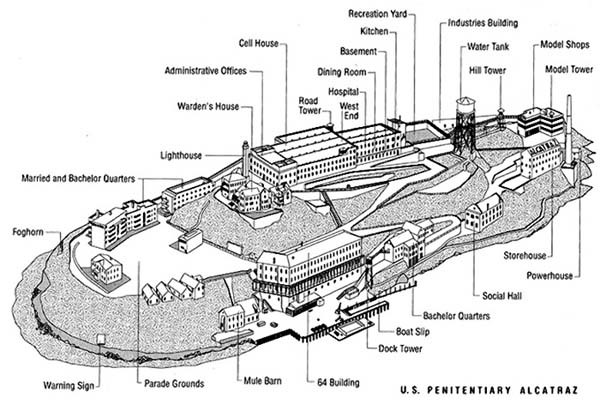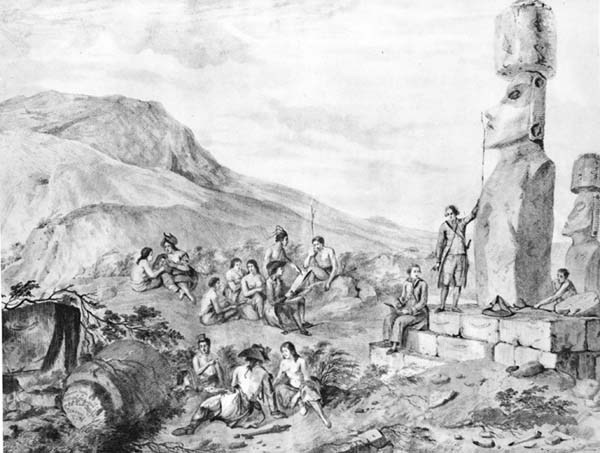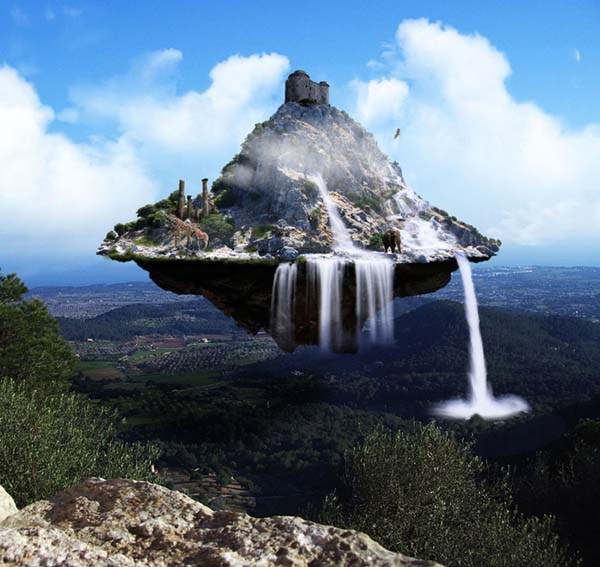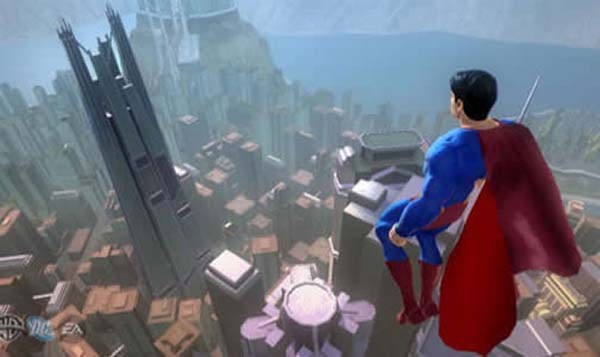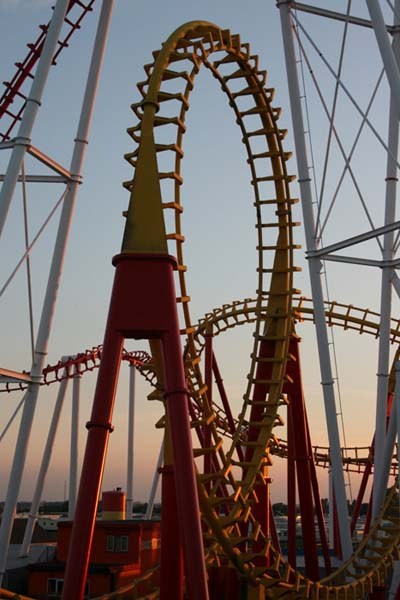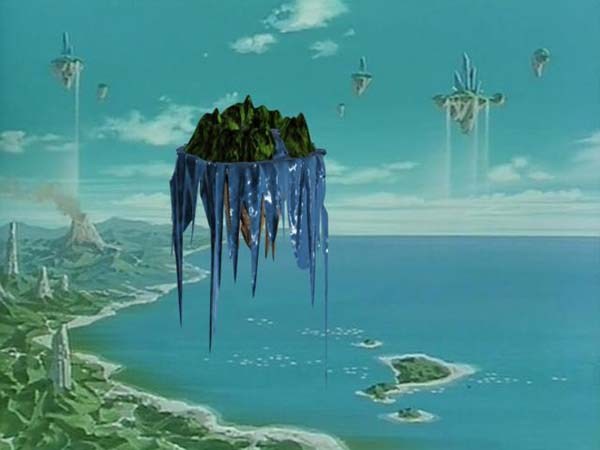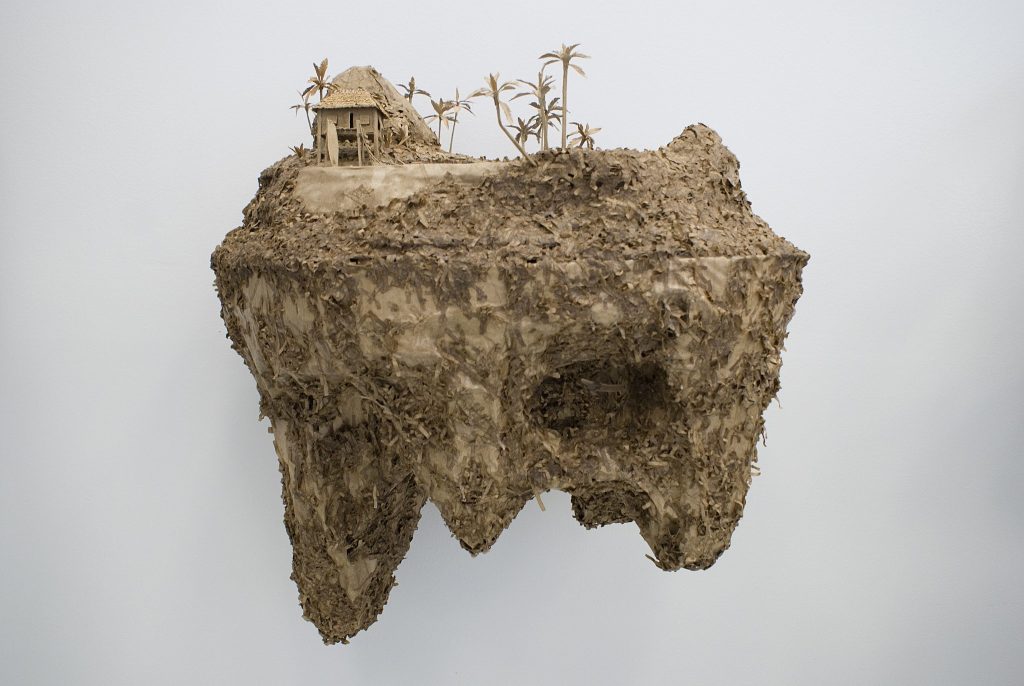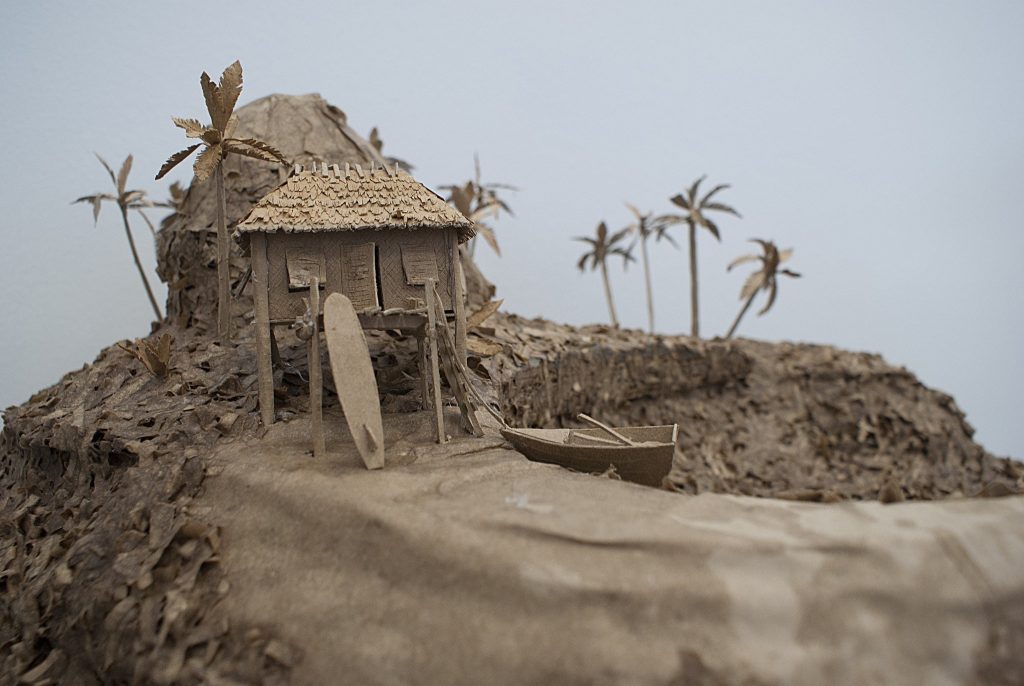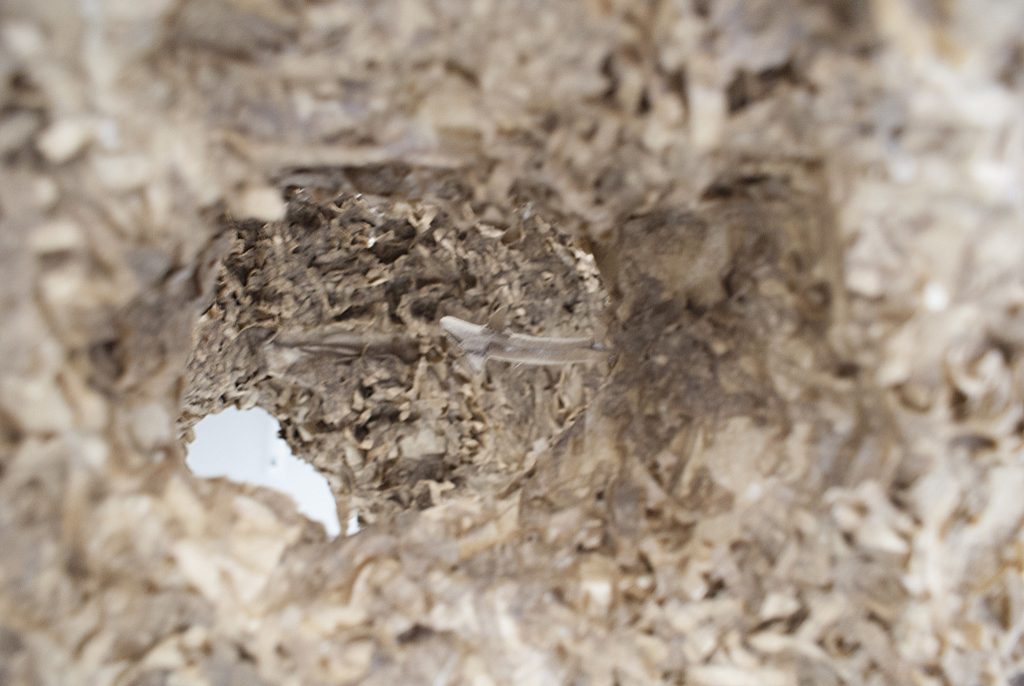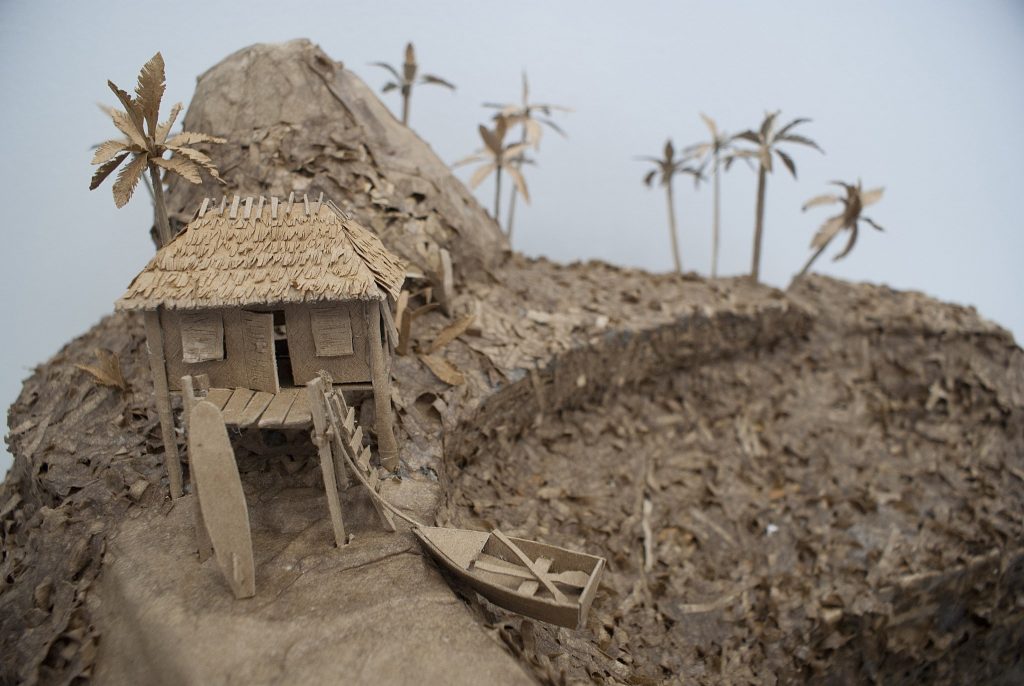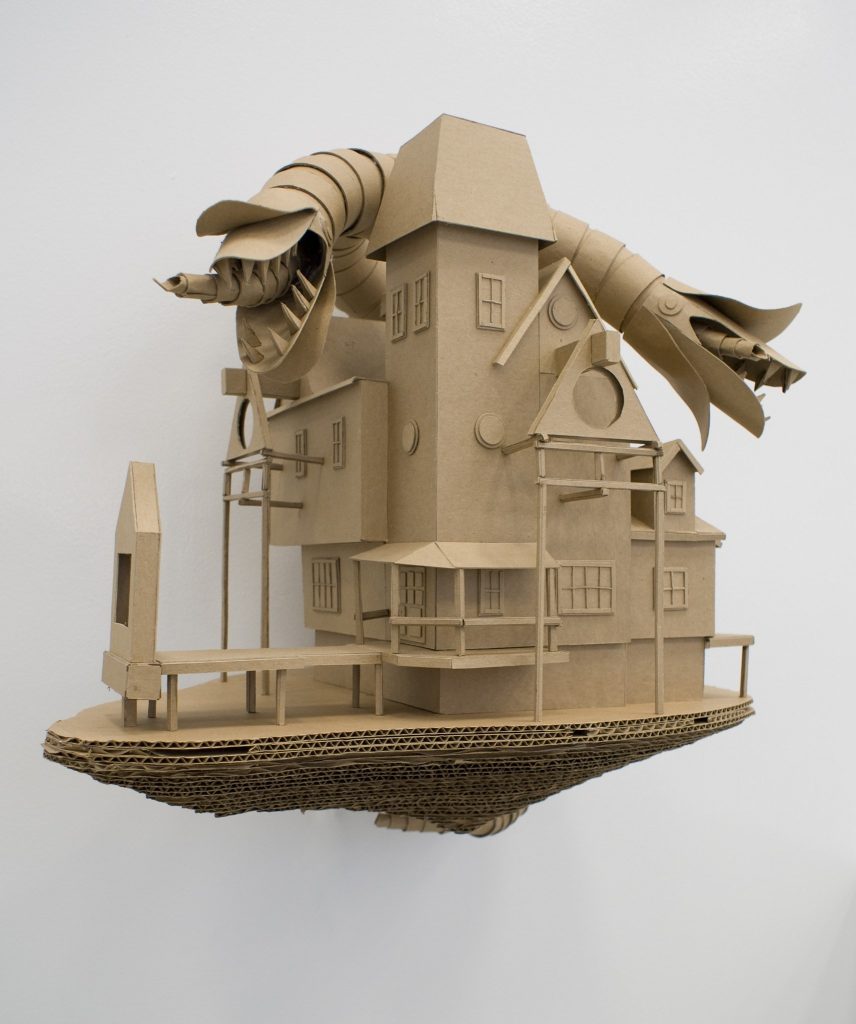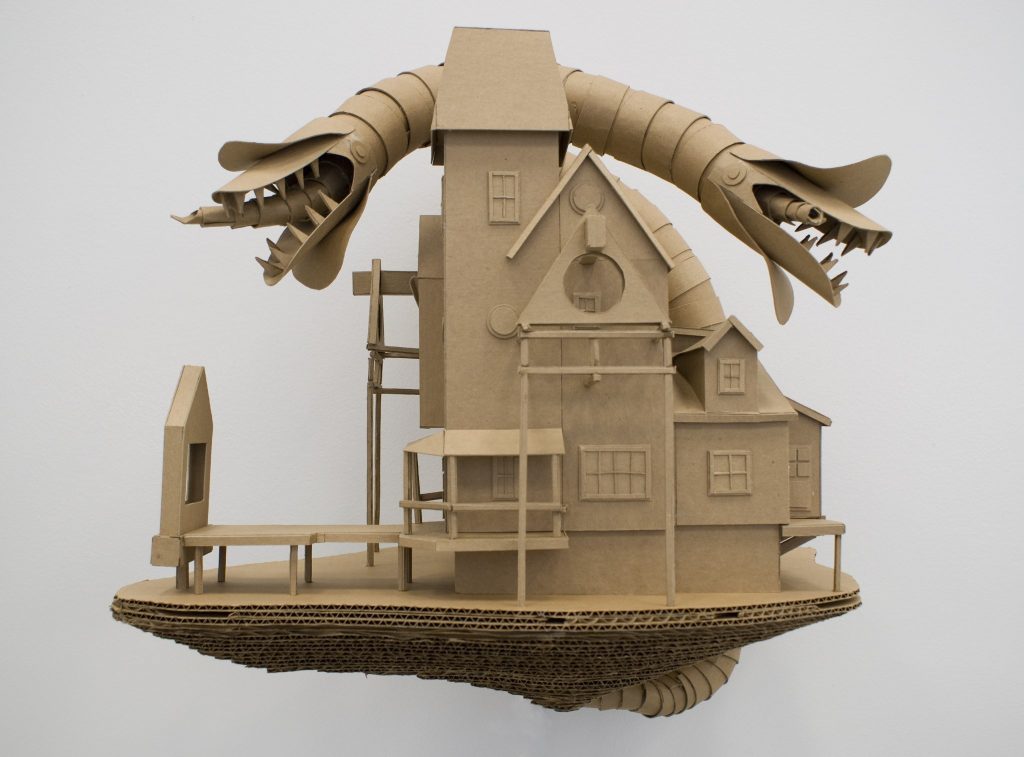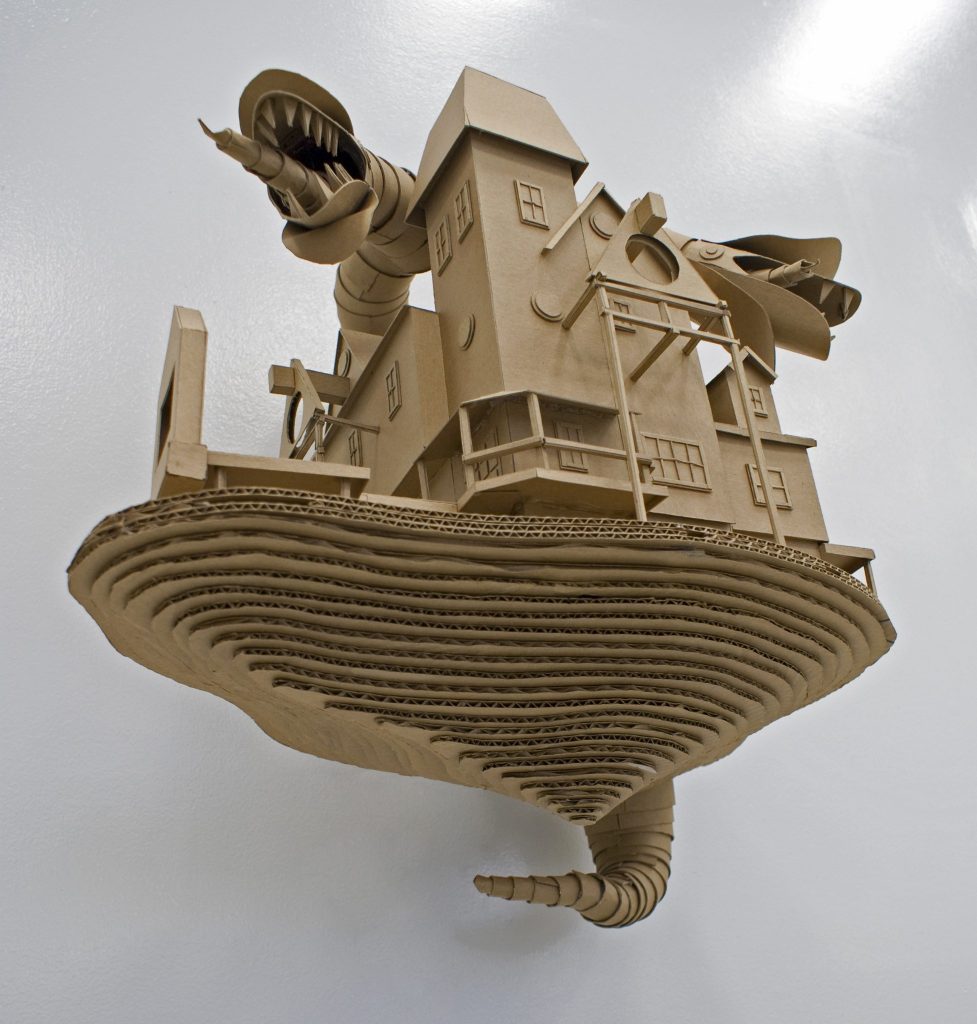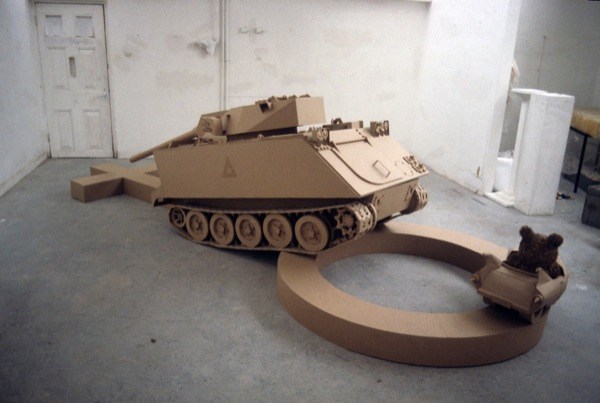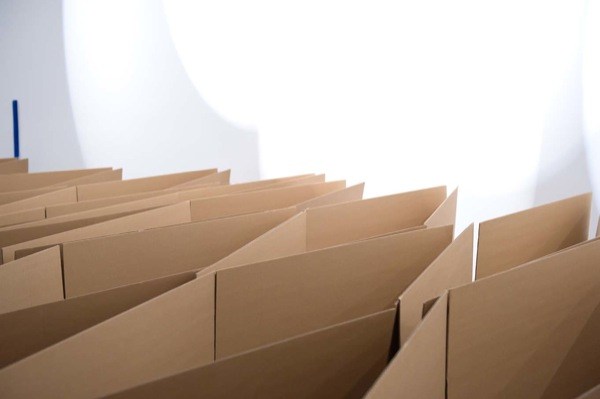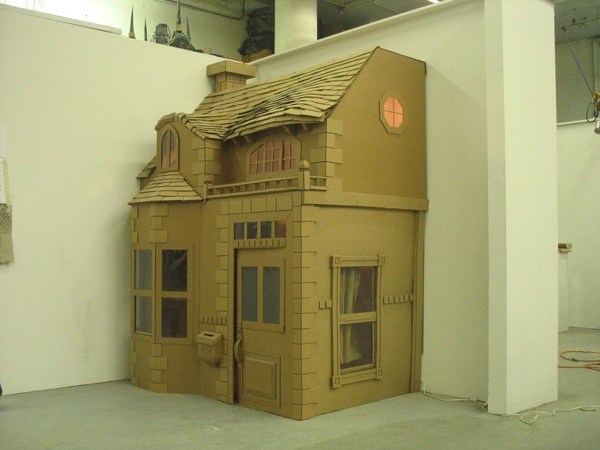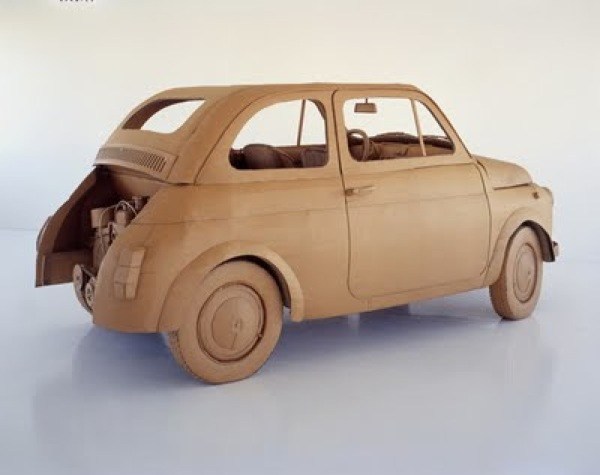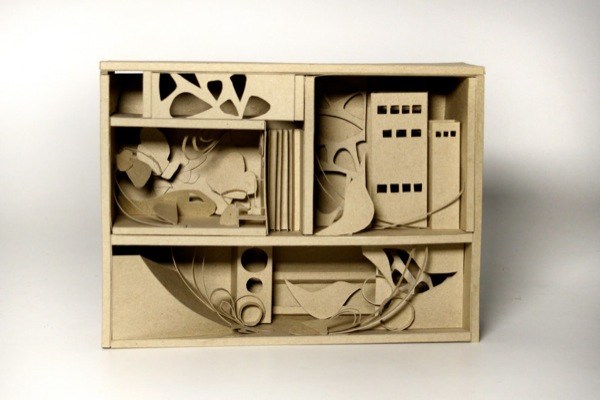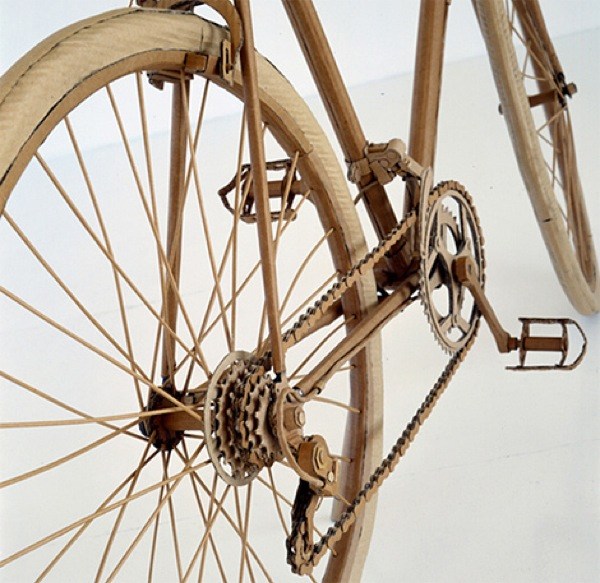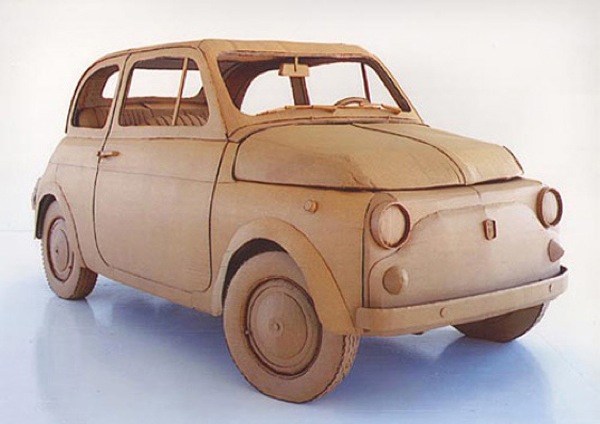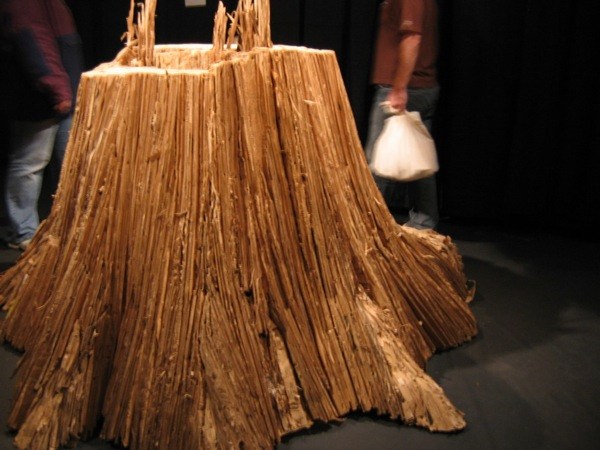Learning Objectives
Students will demonstrate the basic processes of sculpture construction using easily obtainable materials such as cardboard and kraft paper. Students will demonstrate technical proficiency and excellent craftsmanship in the creation of their sculpture. Students will demonstrate creative problem solving in addressing various ideas throughout the completion of their project. Using a floating island as a springboard, students will develop a sculpture that suspends off the wall.
Materials
- Cardboard
- Brown Kraft Paper
- White Elmer’s Glue
- Cheap Chip Brushes
- Xacto Knife
- Utility Knife
- Masking Tape
- Hot glue gun and glue sticks (the regular sized ones)
- Metal ruler
Mini-Assignments
- Create a Pinterest board and share with your instructor. Use this board to research ideas for your island. You’re not trying to copy what is already out there but you are trying to find inspiration. On your board you need to include each of the following –
- 5 images that depict the same mood (eerie, lonely, happy…)
- 5 images of historical architecture
- 5 images of appropriate textures for your island
- 5 images of cardboard works of art
- 5 images of island features (waterfalls, beaches, lagoons…)
- 5 images of other references that you find interesting (movies, artworks, construction methods…)
- Research different methods used in cardboard construction and look over images and videos on this page. Take notes in your sketchbook.
- Sketch out at least 5 different islands from multiple angles in your sketchbook. This will be a floating island. You could create a literal interpretation, a futuristic island, apocalyptic, etc.
- Complete the reading assignment below as well as answering the questions in your sketchbook.
- Accumulate cardboard to bring in to class.
Readings
The readings for this assignment focuses more on design aesthetics than building something with cardboard. Read “Ten Principles for Good Design: Dieter Rams” and watch the video below. Respond to the following questions in your sketchbook. Do you agree with his design principles? Why or why not? Can you think of a few bad designs? What about really elegant ones? How might this affect this next project?
Project
Using your Pinterest board, sketch out your finalized sculpture to scale with the aid of the professor. Make sure to think of any problems you might face while you are building your sculpture. Think about design issues and structural integrity as you sketch out your sculpture. Your sculpture will float off the wall and will need to be designed so that a shelf bracket may slide inside it. This means you to need to make sure it is balance so that it does not rotate or spin when attached the wall.
After getting your sketch approved by the professor, start constructing your island. You should start with the large shapes first and “rough” out the main components. Don’t forget to leave a slot of the mounting bracket. Using sheets of cardboard carefully construct your island. You should use excellent craftsmanship as you work. Edges of the cardboard should not be frayed and glue should not show. The cardboard will not be painted, so what you see if what you get. This is why craftsmanship will be so important – you won’t be able to hide anything.
Continue building your forms for your island. Starts to slowly add details where needed. Examine your sculpture from all sides as you are working to make sure that one side is not neglected. All sides you should be well built and creatively executed.
Create areas of interest. If the viewer comes close to your sculpture, will there be something for them to look at? Create surprises for the viewer.
The videos linked below stress craftsmanship. Take a few minutes to watch them and take note of what makes good craft.
Research
Chris Natrop
Chris Gilmour
The Art of Cardboard
Thomas Demand
Cardboarders.com
